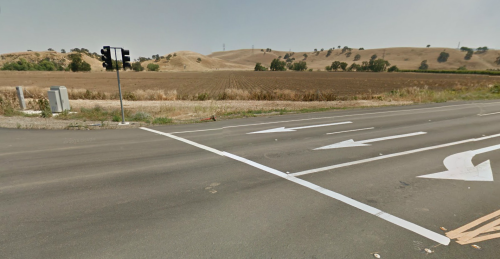The Phase-1 eBART extension, now under construction, will take BART into the Eastern Contra Costa County ex-urbs. Phase-2 would take it beyond the ex-urbs, into rural and greenfield locations. Call it gBART if you will.
It is inevitable that the empty fields surrounding gBART stations will be converted to new housing developments. But will planners use this “blank slate” opportunity to build walkable communities around transit…or will it just be more sprawl?
Well, the answer is pretty obvious from the proposed station renderings. All the stations will be built in a freeway median, surrounded by giant parking lots:
Here is the Google Streetview of the Discovery Bay station location:
MTC policy is that new rail projects must incorporate transit-oriented development in order to receive funding. But as can be seen from these station plans, the TOD requirements are never taken seriously.












